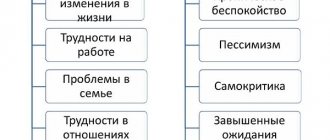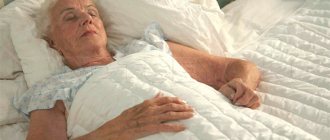general characteristics
Severe dizziness is an intense sensation of movement (rotation or displacement) of the patient himself or the space surrounding him in the objective absence of such changes.
Can be short-term, long-term, permanent. It is divided into systemic and non-systemic. Systemic vertigo, in turn, is divided into central (with the involvement of the inner ear, vestibular nerves and ganglia) and peripheral (due to damage to the cerebellum, brain stem). Severe systemic dizziness is characterized by a feeling of movement in space, falling through, swaying on the waves, instability or displacement of the support under your feet. Non-systemic dizziness occurs due to inconsistency of vestibular, visual and proprioceptive perception. Accompanied by a feeling of instability and difficulty maintaining a pose.
There are systemic and non-systemic dizziness [1, 3, 4]. Systemic dizziness
defined as true dizziness, usually associated with vestibular disorders (with lesions of the peripheral and central parts of the vestibular system),
non-systemic
dizziness - pseudo-vertigo, the cause of which may be mental disorders, hypoglycemia, vascular, autonomic disorders, leading, in particular, to orthostatic hypotension or arterial hypertension.
Variants of non-systemic dizziness that develop as a symptom of mental disorders are classified as psychogenic dizziness
[17].
At the same time, the role of the mental factor as a whole is noted, and not traumatic situations, as is customary in psychiatry. Another term that defines dizziness, which often develops in connection with a mental factor, is functional dizziness
, as opposed to organic [6]. This definition, despite its widespread use, is quite arbitrary, since dysfunction may be associated with structural changes.
The most understandable thing in this regard is to consider dizziness within the framework of a functional-organic continuum, which allows for many transitional options, with different ratios of functional (mental) and organic (somatic) factors. Since more than 80% of all diseases in their development and course are dependent on stress factors [25], a special place in this continuum belongs to mental trauma, which contributes to the development of both mental and otoneurological pathology with the formation of a “vicious psychosomatic circle”.
Functional dizziness, which is exclusively mental in nature, is quite widespread. Thus, in a review by K. Kroenke et al. [20] provide data on the frequency of various types of dizziness in 12 clinics of various profiles: the prevalence of dizziness of a mental nature was 16% (such dizziness took 2nd place after peripheral vestibulopathy - 44%); a significant proportion—12%—was dizziness with unknown causes.
In the field of psychosomatic diseases, dizziness of a mental nature is the leader - 52%. 16% have corresponding disorders of a mixed functional-organic nature and organic ones make up 27% [11].
A number of authors [21, 29] note that dizziness developing in connection with mental disorders is characterized by vague complaints combined with various additional sensations: visual perception of instability and movement of oneself or surrounding objects (tipping over, weightlessness, floating, etc.) ; fainting state; darkening of the eyes with loss of clarity of visual perception; tinnitus; unreality of the environment; subjective instability with a feeling of loss of balance. The listed disorders indicate that with dizziness associated with mental disorders, patients complain not so much about the rotational movement of the environment, but about blurriness and instability of visual perception, a feeling of intoxication or lightheadedness.
The most commonly considered dizziness is included in 4 main groups of syndromes - stress, anxiety-phobic, depressive and asthenic [].
In accordance with ICD-10 [14], the following disorders can be distinguished, the criteria for which include dizziness: stress disorders, including acute stress reaction and post-traumatic stress disorder; phobic disorder (agoraphobia, acrophobia, etc.); panic disorder; generalized anxiety disorder; somatoform disorder (including phobic postural vertigo); neurasthenia; organic emotionally labile (asthenic) disorder.
Dizziness in stress and anxiety disorders is closely related to anxiety, phobia and panic syndrome. Moreover, dizziness is most often observed during acute stress reactions, characterized by severe anxiety and fear with signs of impaired consciousness and perception [7]. It should be kept in mind that anxiety and dizziness may have different cause-and-effect relationships. An unexpected attack of organic (systemic) dizziness causes natural anxiety and fear, which can stabilize, developing into phobic reactions and adaptation disorders. In a situation of prolonged diagnosis and uncertainty, maladaptation of patients may increase with the development of depressive episodes of varying severity [15, 22].
In studies of dizziness in patients suffering from neurotic disorders, various relationships have been established between dizziness and anxiety disorders. Thus, in ⅓ of the cases, anxiety was the cause of dizziness, in another third, anxious reactions were a consequence of organic dizziness, and in another third, an exacerbation of previous anxiety disorders was noted in connection with dizziness of an otoneurological nature. The three identified groups did not differ in the prevalence of phobic disorders, while in the 1st and 3rd groups panic disorders were significantly more often detected [29].
In psychiatric practice, dizziness most often manifests itself in anxiety and phobic syndromes. On the other hand, dizziness is accompanied by certain anxiety disorders (generalized, panic disorder, social phobia) in 28% of cases. Anxiety determines more frequent examinations by specialists and requests for help, which significantly increases the cost of treatment. In the presence of dizziness, a greater number of different somatic diseases are detected, including diabetes, migraine and arterial hypertension [34]. Among cases of “unexplained” dizziness in clinical practice, signs of panic disorder are often identified; dizziness is the most common symptom of panic disorder identified in primary medical practice [27]. Studies have shown that subjective complaints of dizziness do not correlate with objective signs of physiological dysfunction, but their severity is associated with distress, mental, somatic and social anxiety, symptoms of avoidance, autonomic lability, and fear of loss of control and falling due to dizziness [27]. .
The practical need for adequate diagnosis and treatment of anxiety syndromes manifested by dizziness has contributed to the identification of specific variants of somatoform disorders in otoneurological practice. T. Brandt [8] et al. identified a specific disorder they called phobic postural dizziness (PPD), in which dizziness is caused by stressors and perceptual stimulation. In terms of its prevalence, according to the authors, FIG ranks second in the clinic of dizziness. The syndrome is characterized by short episodes of postural dizziness, accompanied by a subjective feeling of dullness and imbalance, expressed fear of falling, which occurs without the presence of episodes of actual falls, but with the formation of avoidance behavior. The severity of symptoms decreases with employment, as well as after taking small doses of alcohol. FPG has a rapid development with the generalization of vegetative-somatic symptoms and an increase in social maladjustment [23]. In the premorbid character structure, predominantly obsessive traits and perfectionism were identified, predisposing to the formation of stable obsessive-compulsive disorders and psychogenic depression. As can be seen from the description of FPG, its psychopathological structure largely corresponds to the structure of panic disorder, including periodic anxiety attacks, obsessive fear of a recurrence of the attack, accompanied by dizziness, as well as avoidant behavior. It should, however, be borne in mind that fear of repeated dizziness with avoidance behavior can also be observed in patients with vestibular dysfunctions [24], which makes it possible to distinguish between primary and secondary panic disorder, which develops on the basis of otological pathology [33]. It should be noted that quite often PPG is preceded not only by significant psychotraumatic factors, but also by organic vestibular disorders (for example, vestibular neuritis or benign paroxysmal positional vertigo), in which other disorders that predispose to dizziness are often identified as concomitants, in particular: diabetes, sinusitis, as well as a history of traumatic brain injury [9]. These data confirm the convention of a dualistic division of disorders accompanied by dizziness into functional and organic, taking into account the role of a previous or residual organic factor. It is this factor that apparently determines the increased vulnerability of the vestibular system during the development of anxiety and fear.
Another somatoform disorder identified in the dizziness clinic based on the relationship between anxiety and dizziness is “chronic subjective dizziness” [29, 31, 32]. This disorder, unlike FPG, is characterized by stable complaints of non-systemic dizziness, which is provoked by one’s own movement and visual perception of moving objects. There is increased sensitivity of visual perception, as well as a pronounced feeling of imbalance. In most cases, an anxiety syndrome is identified, as well as a predisposing anxiety personality disorder. It should be noted that this disorder is similar to generalized anxiety disorder, identified in ICD-10 and characterized by “free-floating” anxiety, not associated with obsessive fear and any specific situations, which, unlike FIG and panic disorder, does not lead to the expectation of the development of dizziness and the formation of avoidant behavior.
Several mechanisms of dizziness associated with anxiety and fear have been identified. Among them, the most studied are the vegetative-somatic mechanism, leading to vascular reactions, as well as hyperventilation, associated with increased breathing, characteristic of the anxiety syndrome and leading to hypocapnia. In addition, a structural connection between the limbic and vestibular systems is assumed, providing a direct connection between anxiety and dizziness [13].
In a large multicenter study of the relationship between mental distress (pathological stress) and somatic symptoms [26], examining more than 5000 patients, a positive correlation was established between both the anxious and depressive components of distress with dizziness. At the same time, dizziness occupied one of the main places in terms of its significance in states of distress, second only to a feeling of powerlessness and headaches. The close pathogenetic relationship between anxiety and manifestations of depressive affect, in particular with melancholy and apathy, allows us to speak about the relationship between anxiety and depressive disorders identified in international classifications. In this regard, dizziness is a fairly common somatic symptom of depression, reaching 48% in some studies [14]. As with anxiety disorders, dizziness without an organic basis is detected in depression approximately 2 times more often than dizziness associated with vestibular disorders. It should also be noted that approximately ⅔ of patients suffering from chronic dizziness that does not have an organic basis had a history of recurrent depressive episodes. At the same time, depression was noted in only 20% of patients suffering from dizziness of an otoneurological nature [18]. It is possible that in depressive disorders, dizziness is associated with the severity of the anxiety component, however, somatovegetative and, in particular, vascular disorders characteristic of melancholy affect also predispose to its development. No less significant is the asthenic component of depression, manifested by vascular reactions in the form of orthostatic hypotension or episodes of arterial hypertension and, consequently, dizziness.
Dizziness, along with mental and physical exhaustion, is one of the main symptoms of asthenic disorders [3]. Currently, asthenia is presented in ICD-10 in the groups of neurasthenia and organic emotionally labile (asthenic) disorder. As can be seen from the classification, the functional-organic opposition remains in this group. Meanwhile, as with anxiety disorders, dizziness with asthenia is most often observed as a result of the complex influence of various factors depleting the central nervous system, which can often include not only work and family overload, but also a previous, residual or latent somatic disease. Asthenic dizziness often develops in connection with vegetative-vascular disorders, causing orthostatic hypotension or arterial hypertension. In addition, the role of anxiety reactions, often accompanying asthenia, is undoubted. The development of anxiety disorders and dizziness against the background of moderate cognitive disorders, observed, in particular, with vascular insufficiency in old age, is typical. Impairments in memory, attention and logical thinking can provoke stable anxiety states that have a complex nature, including the vascular factor, and are manifested, in particular, by dizziness.
In psychiatric practice, one should take into account the fact that most psychotropic drugs can provoke dizziness. This negative effect applies, first of all, to benzodiazepine tranquilizers and barbiturate-containing drugs (Valocordin, Corvalol, etc.), most often used by the population for the treatment and self-medication of anxiety reactions and conditions. With long-term use (more than 2 weeks), this effect is observed most often. Dizziness can also develop during treatment with antipsychotics and antidepressants. Modern antidepressants, in particular serotonin reuptake inhibitors (SSRIs), are not without this effect. Dizziness can occur with the prescription of high doses and intolerance, as well as as part of the SSRI withdrawal syndrome [10].
Meanwhile, it has been shown that both anxiolytics and antidepressants from the SSRI group, in small daily doses, are most effective in the treatment of dizziness [12, 26, 28]. A positive effect was noted both in dizziness of functional origin and in peripheral vestibulopathies in patients with both severe and mild anxiety-depressive disorders [29-32]. In this regard, the authors suggest the significance of disturbances in serotonin metabolism in the hippocampus, which ensures the regulation of motor coordination and autonomic functions.
The use of herbal preparations in the treatment of dizziness has not been sufficiently studied. Currently, these drugs are widely prescribed for the treatment of asthenic anxiety and depressive disorders, for example, in the USA [19].
It has been established that a number of herbal preparations are effective in the treatment of asthenic disorders. This applies, in particular, to the preparation tanakan (Egb 761, ginkgo), containing a standardized extract from the leaves of the relict tree Ginkgo biloba. Tanakan has been proven to be highly effective in treating asthenic and cognitive disorders. A study of the use of tanakan in asthenic disorders revealed a stimulating effect of the drug with its maximum effectiveness in the hyposthenic variant of asthenia, accompanied by fatigue, lethargy, and drowsiness [2]. This variant of asthenia was often accompanied by vegetative-vascular disorders, in particular orthostatic dizziness. The positive effect of tanakan on cognitive functions, primarily memory and attention [5], determines its effectiveness in emotionally labile (asthenic) organic disorder in patients suffering from discirculatory vascular disorders. In these cases, with a decrease in moderate cognitive impairment and associated anxiety reactions, an indirect reduction in autonomic lability and the frequency of dizziness is possible. One of the clinical placebo-controlled studies [35] showed a significant anxiolytic effect of tanakan in generalized anxiety disorder and adjustment disorders. It is assumed that, if we take into account the moderate antidepressant effect of the drug, it can be used in the complex treatment of dizziness in asthenic depression. In experimental and clinical placebo-controlled studies in recent years, significant results have been obtained reflecting the effectiveness of EGb761 in dizziness of various natures. The positive effect of tanakan in the development of dizziness is due to its ability to accelerate vestibular compensation, which, depending on the pathogenesis of dizziness, is explained by various mechanisms: antioxidant effect, activation of cerebral metabolism, as well as suppression of the production of corticotropin-releasing factor [16].
Thus, in the diagnosis and treatment of dizziness, it is necessary to take into account the multifactorial nature of the diseases that cause it. Effective therapy for dizziness is possible only by assessing the influence of stress factors with a differentiated diagnosis of mental disorders involved in the pathogenesis of a wide range of diseases accompanied by dizziness.
[] In one of the films “Vertigo” (1958), Alfred Hitchcock, not being a psychiatrist, showed almost all the main relationships between vertigo and psychopathological symptoms. The hero of the film, who has experienced acute mental trauma, suffers from a stress disorder accompanied by flashbacks (vivid images of a stressful situation), acrophobia (fear of heights) and depression with feelings of guilt, with a central symptom of dizziness.
Why does severe dizziness occur?
Motion sickness syndrome
Movement disease (kinetosis) is a condition that develops as a result of excessive irritation of the vestibular apparatus. Includes air and sea sickness, dizziness when riding a horse, traveling in a car, riding on attractions. It is also observed with monotonous movements of the head and body, especially rotational ones. In severe cases, it is accompanied by severe dizziness, severe nausea, and sometimes repeated vomiting.
It worsens during pregnancy, after overeating, drinking alcohol, when exposed to additional unfavorable factors (noise, odors), the presence of certain somatic and neurological diseases, and increased anxiety. Symptoms usually disappear quickly after vestibular hyperstimulation ceases. In some patients, gradually decreasing dizziness continues for several days.
Inner ear diseases
The causes of dizziness are the following lesions of the vestibular analyzer:
- BPPV.
It occurs when the position of the head changes and is provoked by the movement of otoliths freely floating in the endolymph of the semicircular canals. The attack is highly intense, lasts no more than 1 minute, and is accompanied by autonomic disorders. There is no tinnitus, hearing is normal. - Labyrinthitis.
Attacks of severe dizziness lasting from several minutes to 1-2 hours are observed in acute inflammation of the inner ear, exacerbation of the chronic form of the disease, and less often in a smoothed form are observed in the remission phase. Complemented by tinnitus, hearing impairment, hyperhidrosis, nausea, vomiting, paleness or redness of the face. - Meniere's disease.
An attack lasts from 1-2 minutes to a day or more, developing from once a year to several times a day. Caused by stretching of the labyrinthine channels against the background of an increase in the amount of endolymph. Caused by physical exertion, fatigue, and drinking alcohol. Includes autonomic disorders, balance disorders, fluctuating hearing loss, noise, and tinnitus. - Lermoyer's syndrome.
The cause of the symptom is spasm of the labyrinthine vessels. Initially, the patient complains of increasing noise in the ear for 1-2 days or several weeks. In the second phase of the attack, severe dizziness is observed, lasting from 20 minutes to several hours.
Severe dizziness
Vestibular neuronitis
The clinical picture, including severe dizziness and vegetative symptoms, develops acutely and lasts from several hours to several days. The cause of vestibular neuronitis is inflammation of the nerve after a viral or bacterial infection, and less commonly, the use of aminoglycosides. Hearing impairment, focal and meningeal neurological symptoms are absent. A distinctive feature is the single nature of the attack. A second episode of dizziness is observed in only 2% of patients; a previously intact nerve is always affected.
Idiopathic bilateral vestibular insufficiency
The reasons for the development have not been established. It manifests itself as repeated episodes of severe dizziness, oscillopsia (a feeling of vibration of stationary objects). There are no hearing impairments. Balance disorders and oscillopsia gradually increase. Over time, the same picture is formed as with symptomatic bilateral vestibular insufficiency against the background of other diseases (for example, Meniere's disease). Oscillopsia is provoked by changes in the position of the body or head; walking in the dark or on uneven surfaces becomes impossible.
Cerebrovascular disorders
Severe dizziness lasting more than a day may indicate the development of a brainstem or cerebellar stroke. If there is a sharp decrease in hearing, one should suspect a concomitant labyrinthine infarction. Vertical strabismus and certain types of nystagmus indicate damage to the central vestibular structures. When the trunk is involved, tetra- or hemiparesis, Horner's syndrome and Babinski's symptom are observed, with strokes in the cerebellum - dysarthria, ataxia.
Unlike strokes, with TIA, dizziness and other symptoms completely disappear within 24 hours. Possible sensory disturbances, transient paresis, diplopia, dysarthria, unsteadiness of walking. In patients with cerebral atherosclerosis, severe dizziness is constant. Occurs in old age. Complemented by decreased ability to work, insomnia, headaches, and memory impairment. Symptoms progress over time.
Diseases of the heart and blood vessels
Severe dizziness is caused by a sudden decrease in cardiac output. Myocardial infarction is manifested by intense pain in the chest and fear of death. With bradycardia, sick sinus syndrome and Frederick's syndrome, attacks develop against the background of pain and discomfort in the heart, weakness, shortness of breath, and exercise intolerance.
In addition, the symptom occurs with orthostatic collapse - a lack of blood supply to the brain due to a decrease in blood pressure when changing body position (standing up suddenly). The condition develops against the background of weakened vascular tone. It may be an individual feature, detected in hypovolemia of various origins, some vascular and neurological diseases, including vegetative-vascular dystonia.
Intoxication
Severe non-systemic dizziness in combination with imbalance is a sign of toxic damage to the cerebellum due to the use of benzodiazepines, lithium, and antiepileptic drugs. Dysarthria, gaze-induced nystagmus, and ataxia, more pronounced in the torso area, are detected. The history reveals treatment with the listed drugs.
With alcohol intoxication, the symptoms are supplemented by positional nystagmus (occurring when the head is tilted). In the first 3 hours after drinking alcohol, nystagmus is directed to the lower ear, then to the upper ear. Carbon monoxide poisoning is characterized by dizziness, pressing headache, nausea, vomiting, visual disturbances, unsteadiness of gait, arrhythmia, tachycardia. Psychomotor agitation and decreased criticism are possible.
Severe anemia
The severity of the symptom in anemia correlates with the severity of the disease. In patients with iron deficiency anemia, manifestations progress slowly, gradually, reaching significant severity in the absence of treatment. Complemented by shortness of breath, palpitations, weakness, pallor, dry skin. In patients with sickle cell anemia, severe dizziness accompanies sequestration crises, during which blood pressure drops sharply due to the deposition of blood in the liver and spleen.
Panic attacks
Paroxysmal, unsystematic dizziness is one of the main complaints of people suffering from panic attacks. It is combined with lightheadedness, darkening of the eyes, ringing in the ears, tachycardia, various autonomic symptoms, and peak emotional experiences. Can be observed with depression, neurasthenia, hypochondria. Often detected in patients with hysteria. Lasts 15-20 minutes, sometimes up to 1 hour.
Other reasons
The symptom is part of the clinical picture of a number of acute conditions:
- Acute blood loss.
It is observed in injuries and some diseases. With internal bleeding, severe dizziness, along with sudden pallor, thirst, tachycardia, and hypotension allows one to suspect pathology even in the absence of other obvious signs (the source of bleeding). - TBI.
Dizziness is observed with all traumatic brain injuries: concussions, brain contusions, etc. It is combined with nausea, central (not bringing relief) vomiting, and headache. The intensity of manifestations varies. Other signs are determined by the type and severity of the injury. - Profuse diarrhea.
The appearance of the symptom is due to deterioration of blood supply to the brain against the background of hypovolemia. The condition accompanies acute intestinal infections: cholera, dysentery, salmonellosis.
Diagnosis and treatment of psychogenic dizziness
Dizziness is one of the most common symptoms in neurological and general somatic practice. Complaints of dizziness rank third after complaints of headache and back pain. First of all, you must remember that dizziness is just a symptom and not an independent disease. It can be a manifestation of various sufferings - cardiovascular, endocrine, mental, diseases of the spine, brain, etc., in total there are about 80 different nosological forms. Determining the causes of dizziness and its treatment require a multidisciplinary approach, and sometimes the use of complex equipment. Due to these objective difficulties, no more than 20% of patients receive a correct diagnosis and adequate treatment [1].
The head of a large otoneurological clinic in Germany and the author of the famous monograph “Dizziness,” Thomas Brandt, cites in it the most common causes of dizziness. Psychogenic dizziness, including paroxysmal phobic dizziness, ranks second after benign paroxysmal dizziness (Fig. 1).
The cause of psychogenic dizziness can be any mental illness, but most often anxiety disorders.
Diagnosis of psychogenic dizziness
Psychogenic dizziness refers to vague sensations described as dizziness, which most often occur in neurotic, stress-related disorders.
Diagnosis of psychogenic dizziness includes two sequential and mandatory stages.
The first stage is a negative diagnosis aimed at excluding all other possible causes of dizziness:
- damage to the vestibular system at any level;
- somatic and neurological diseases accompanied by lipothymia;
- neurological diseases accompanied by impaired walking and balance.
This requires a thorough examination of the patient, in some cases with the involvement of otoneurologists, cardiologists, hematologists, etc., as well as a thorough paraclinical study.
Thus, when examining a patient with dizziness at the first stage, it is important to determine the type of dizziness. To do this, you should carefully collect anamnesis - ask the patient in detail what he means by the word “dizziness.” With vestibular, systemic, true vertigo or vertigo, the patient experiences an illusory sensation of movement of a stationary environment in any plane, as well as a sensation of movement or rotation of his own body. The cause of systemic dizziness is damage to the vestibular analyzer at the peripheral or central level.
Psychogenic dizziness is always non-systemic in nature. The patient describes any sensations other than rotation: fog in the head, instability, fear of falling, and others.
When making a differential diagnosis, it is also extremely important to identify and clarify the nature of concomitant somatic and neurological manifestations to exclude other “organic” causes of non-systemic dizziness. For this purpose, a study of nystagmus, balance tests, audiography, computed tomography (CT) or magnetic resonance imaging (MRI), Doppler ultrasound of the main arteries of the head, compression-functional tests, radiography of the skull, internal auditory canal, cervical spine, complete blood count, fasting blood sugar, blood urea nitrogen and other studies [4].
The second stage is a positive diagnosis of neurotic disorders associated with stress.
Among emotional disorders, the most common cause of dizziness is anxiety or anxiety-depressive disorders. It is the frequency of anxiety, which is the most common emotional disorder and is observed in 30% of the population, that determines the high prevalence of psychogenic dizziness.
The clinical picture of anxiety disorders consists of mental symptoms, the most common of which are anxiety, worry about trifles, a feeling of tension and stiffness, as well as somatic symptoms, mainly caused by increased activity of the sympathetic division of the autonomic nervous system. One of the commonly observed physical symptoms of anxiety is dizziness and lightheadedness. The combination of mental and physical symptoms is not accidental - when the body is threatened or there is any potential threat, preparation occurs to fight the danger or flee from it. These changes in the body are ensured by the autonomic nervous system, which is a potential “bridge between the psyche and soma.” The most common symptoms of anxiety are presented in Fig. 2, 3.
Purely anxiety disorders are relatively rare in clinical practice. In most cases, in 70% of patients, anxiety disorders are combined with depressive disorders. The mental symptoms of anxiety and depression are largely similar and overlap. The comorbidity of the two most common mental disorders is determined by common biochemical roots—the role of serotonin in the pathogenesis of both conditions is discussed. The high effectiveness of both tricyclic antidepressants (TCAs) and some selective serotonin reuptake inhibitors (SSRIs) for both anxiety and depression confirms that serotonin has both anxiolytic and antidepressant effects. Finally, with the long-term existence of anxiety disorders, the patient inevitably develops a feeling of complete spiritual paralysis and depression develops. The onset of depression is accompanied by symptoms such as chronic pain disorder, weight loss, sleep disturbances, and others, which can increase symptoms of anxiety. Thus, a vicious circle develops: the prolonged existence of anxiety causes the development of depression, and depression increases the symptoms of anxiety. The high frequency of comorbidity of anxiety and depression is taken into account in the latest classifications - a special subgroup has been identified within anxiety states - mixed anxiety-depressive disorder.
According to ICD-10, there are four types of anxiety disorders: anxiety disorders (generalized anxiety disorder, mixed anxiety-depressive disorder, panic disorder); phobic anxiety states (simple phobias, social phobia, agoraphobia); obsessive-compulsive disorder; reactions to a stressful stimulus (simple reactive disorder, post-stress reactive anxiety disorder).
The feeling of dizziness most often occurs in patients with generalized anxiety disorder. In this case, the patient suffers from constant unjustified or exaggerated fears for his family, health, work or material well-being. At the same time, an anxiety disorder is formed regardless of any specific life event and, thus, is not reactive. In such a patient, at least six of the common anxiety symptoms listed above may be observed every or almost every day for more than six months—the “rule of six.”
A patient with generalized anxiety, when visiting a neurologist, rarely reports mental symptoms, but, as a rule, presents a lot of somatic (vegetative) complaints, where dizziness can be the leading symptom, or actively presents the only complaint of dizziness. This happens because the patient is most alarmed by the feeling of dizziness, thoughts of a stroke or other serious brain disease arise, mental disorders - fear, impaired concentration, irritability, wariness, etc. are regarded as a reaction to severe, currently not identified illness. In other cases, mental disorders are mild, and the clinical picture is actually dominated by dizziness. The latter option is especially common in cases where anxiety disorders occur in patients with congenital vestibulopathy. Such people have an imperfect vestibular apparatus since childhood. This is manifested in their poor tolerance to transport (sickness), poor tolerance to heights, swings and carousels. In an adult, these symptoms are less relevant; over the years, the vestibular apparatus is trained and vestibular disorders are compensated, however, when anxiety occurs, various sensations may arise - instability, fog in the head, etc., which are interpreted by them as dizziness.
One of the most important features of psychogenic dizziness is its combination with disorders in other systems, since the somatic manifestations of anxiety are always multisystemic (
). The ability of a doctor to see, in addition to complaints of dizziness, the disorders that naturally accompany it in other systems, allows us to understand its clinical essence and determine its psychosomatic (vegetative) nature [7]. For example, dizziness in generalized anxiety disorder is often associated with increased breathing (hyperventilation syndrome), in which, due to excessive blood oxygen saturation and hypocapnia, presyncope, paresthesia, muscle spasms or cramps, cardialgia associated with increased tone of the pectoral muscles may develop. as a result of increased neuromuscular excitability, tachycardia, etc. To identify polysystemicity, it is necessary to actively ask the patient about the presence of other complaints and disorders in addition to dizziness.
Psychogenic dizziness can also be one of the main symptoms of panic disorder. It is characterized by the recurrence of panic attacks and anxiety in anticipation of the next attack. The diagnosis of a panic attack is characterized by the presence of emotional disorders, the severity of which can range from a feeling of discomfort to panic and other mental or somatic symptoms - at least 4 out of 13, among which one of the most common is dizziness. Dizziness in the picture of a panic attack can occur spontaneously, without any apparent reason, in the words of patients - “out of the blue.” However, in more than half of the cases, it is possible to find out that dizziness arose after emotional stress or fear experienced by the patient, especially for the very first and, as a rule, the most severe attack.
A special type of phobia is phobic postural vertigo. It is described by patients as instability in the form of attacks (seconds or minutes) or a feeling of an illusory violation of the body’s stability lasting a fraction of a second and can occur spontaneously, but is more often associated with special perceptual stimuli (overcoming a bridge, stairs, empty space) [2].
The most demonstrative is psychogenic dizziness in patients suffering from agoraphobia. At home, surrounded by relatives or a medical facility, the patient may not experience dizziness or it may be mild (serve himself, do housework without difficulty). A neurological examination does not reveal any walking or balance disorders in such a patient when special tests are carried out. When moving away from home, especially in transport, in the subway, dizziness, gait disturbance, instability, suffocation, heart pain, tachycardia, nausea, etc. occur.
In all of these cases, dizziness is a symptom, a manifestation of one or another type of anxiety disorder.
Thus, the following clinical features of psychogenic dizziness can be distinguished:
- Dizziness is intermittent and has been described as “brain fog,” a feeling of mild intoxication, or a fear of falling. Fluctuating instability in the form of attacks (seconds or minutes) or a sensation of an illusory violation of the body’s stability lasting a fraction of a second is possible.
- Dizziness appears spontaneously, but is often associated with specific perceptual stimuli (bridge, stairs, empty space) or situations that are perceived by the patient as provoking factors (subway, department store, meeting, etc.).
- Dizziness and complaints occur in a standing position and while walking, despite the normal performance of stability tests such as the Romberg test, tandem walking, standing on one leg, etc. With psychogenic dizziness, a significant decrease in staggering in the Romberg position is often noted when distraction - psychogenic Romberg.
- The cardinal clinical sign of psychogenic dizziness is its combination with disorders in other systems (polysystemic), which indicates its secondary psychosomatic (vegetative) nature.
- The onset of the disease follows a period of fear or emotional stress and often occurs in individuals with vestibulopathy (congenital deficiency of the vestibular apparatus).
- Anxiety and anxiety-depressive disorders accompany dizziness, although dizziness can occur without anxiety.
- There are no objective clinical and paraclinical signs of organic pathology.
Psychogenic dizziness occurring after benign paroxysmal vertigo
Benign paroxysmal vertigo (BPV) is the most common type of vertigo. Its cause is cupulolithiasis - the formation of deposits (detritus) in the semicircular canals of the inner ear, which irritate the receptors as they move and cause severe vestibular vertigo. When changing body position, often when getting out of bed or turning the head, the patient experiences a feeling of strong rotation, lasting from several seconds to a minute and accompanied by nausea, vomiting and other vegetative symptoms. To diagnose BPH, the Hallpike test is used. The patient turns his head 30 degrees to the side and moves from a vertical to a horizontal position with his head slightly tilted back. At the same time, he experiences severe systemic dizziness and nystagmus. The disease is benign, but is prone to relapse. To treat it, special Epley positional techniques are used, the task of which is to mechanically remove detritus from the posterior semicircular canal of the inner ear, after which the dizziness stops.
An attack of BPH is always difficult for the patient, can be repeated when turning the head, chains him to bed, and forces him to take a forced position. Undoubtedly, DPG is a stress-generating factor, is accompanied by fear and can provoke reactive anxiety disorder in an emotionally labile person. In some cases, the anxiety disorder that develops following DPG is iatrogenic. Doctors often misdiagnose patients with BPH as acute cerebral circulatory disorders in the vertebrobasilar system, hospitalize them, and conduct massive courses of vascular therapy, thereby convincing the patient of the severity of his condition and the presence of a fatal disease. In such frequent cases, the patient develops an anxiety disorder as a reaction to a severe neurological disease. Dizziness becomes unsystematic (instability, fear of falling, fog in the head, etc.), acquires a constant course, periodically intensifying. In such cases, both negative and positive diagnosis of psychogenic dizziness are especially important. A Hallpike test is mandatory. It must also be remembered that acute cerebrovascular accidents (ACVA) in the vertebrobasilar system, in addition to dizziness, are necessarily accompanied by other signs of damage to the brain stem: oculomotor, bulbar, sensory and other disorders.
Treatment of psychogenic dizziness
In the treatment of psychogenic dizziness, complex therapy is used, combining both non-drug and medicinal treatment methods [7].
Non-drug treatments include:
1) vestibular gymnastics, aimed at training and reducing the excitability of the vestibular apparatus; 2) breathing exercises: transition to the abdominal type of breathing, in which exhalation is twice as long as inhalation. Such breathing exercises reduce hyperventilation disorders comorbid with psychogenic dizziness. To relieve severe hyperventilation disorders, during a hyperventilation crisis, breathing into a paper or plastic bag can be recommended; 3) the most effective method of treatment is psychotherapy.
Medicinal methods.
1) Psychotropic therapy has priority in the treatment of psychogenic dizziness.
The first-line drugs for the treatment of anxiety disorders are antidepressants - SSRIs, Paxil and Fevarin have an anxiolytic effect; tricyclic antidepressants (amitriptyline) are used less frequently due to the presence of a large number of side effects and poorer tolerability. Traditional anxiolytics are benzadiazepines (Phenazepam, Diazepam, Alprazolam, Clonazepam, etc.). In some cases, a positive effect in the treatment of anxiety disorders is achieved with the use of “small” antipsychotics (sulpiride, tiapride, thioridazine), usually using small doses.
The drug Atarax (hydroxyzine) has shown pronounced effectiveness against psychogenic dizziness developing as part of generalized anxiety disorder. Atarax is an H1-histamine receptor blocker. It has a pronounced anti-anxiety, antihistamine, antipruritic and antiemetic effect. In a study conducted at our department, prof. Solovyova A.D., it was shown that in patients with vegetative dystonia syndrome, which is the main neurological manifestation of generalized anxiety disorder, complaints of dizziness and lipothymic (presyncope) states decreased by almost 80%.
2) Additional therapy.
As an additional therapy, the drug Betahistine is used, which reduces the excitability of the vestibular apparatus and is effective for all types of dizziness, including psychogenic.
The effectiveness of Betaserc was tested in patients with psychogenic dizziness using a special computer program developed by the staff of the Institute of Medical and Biological Problems, prof. Kornilova L.N. et al. In a joint study with our department [6], it was shown that the drug objectively improves vestibular reactivity and the state of the oculomotor system (
). A follow-up study revealed that the effectiveness of Betaserc was temporary, so it should be used for a long time for this type of dizziness as an additional therapy, especially in cases where dizziness develops in people with congenital vestibulopathy and acts as a leading somatic symptom.
For questions regarding literature, please contact the editor.
E. G. Filatova , Doctor of Medical Sciences, Professor of the FPPOV MMA named after. I. M. Sechenova, Moscow
Polysystemicity of somatic manifestations of anxiety
. Efficacy of Betaserc in the treatment of psychogenic dizziness
Diagnostics
The cause of severe dizziness is determined by a neurologist. Taking into account the existing symptoms, the patient may be referred for consultation to a vestibulologist, otolaryngologist, cardiologist, and other specialists. Dizziness is subjective and often difficult to describe. Therefore, the most important task at the initial stage of the examination is to reliably establish the presence of a symptom by differentiating it from other manifestations (visual impairment, headache).
The specialist refrains from offering his own formulations, collects complaints in detail, and asks about feelings. To determine the level of damage, a detailed neurological examination is performed to confirm neurological disorders, coordination disorders, the presence and type of nystagmus, and the preservation of the vestibulo-ocular reflex. The final diagnosis is made based on the results of the following procedures:
- Research of the vestibular analyzer
. The complex includes positional tests, caloric tests, videonystagmography, videooculography, stabilography. - Hearing research
. In diseases of the inner ear (with the exception of BPPV), hearing impairment is detected during testing with tuning forks and audiometry. If there are no disorders, selective damage to the vestibular analyzer should be suspected. - and MRI.
Informative for circulatory disorders in the brain, head injury, lesions of the inner ear. Irreversible changes due to ischemic and hemorrhagic strokes, hematoma, damage to solid structures and brain matter in trauma are well detected. For patients with cerebral atherosclerosis, MRI of cerebral vessels is recommended. - Sonography
. Using ultrasound of cerebral vessels, atherosclerotic changes are visualized. According to echocardiography, the morphofunctional parameters of the heart are determined, signs of ischemic heart disease and other cardiac pathologies are detected, which can provoke arrhythmias that cause dizziness. The results of echoencephalography confirm increased intracranial pressure and displacement of brain structures due to TBI. - Lab tests
. A general blood test makes it possible to establish the fact of blood loss and determine the type and severity of anemia. Detection of blood in stool is indicative of gastrointestinal bleeding. For victims of carbon monoxide poisoning, a carboxyhemoglobin test is performed. For intestinal infections, bacteriological examination of stool is carried out, and serological tests are performed.
Consultation with a vestibulologist
Treatment
Conservative therapy
Therapeutic tactics are determined by the type of pathology that provoked severe dizziness:
- Diseases of the inner ear
. For organic lesions, antipsychotics, anticholinergics, vasodilators, and antihistamines are used. Patients with BPPV undergo training of the vestibular apparatus. - Vestibular neuronitis
. Symptomatic therapy is carried out using vestibulosuppressors and benzodiazepine tranquilizers. The duration of the course is determined by the severity of dizziness. - Cerebrovascular disorders
. In case of strokes, measures are taken to maintain vital functions, regulate hemostasis, and prevent cerebral edema. Anticonvulsants, hypothermic and antiemetics, and neuroprotectors are prescribed symptomatically. For atherosclerosis, lipid-lowering medications and neurometabolites are used. - Heart diseases
. The treatment program may include narcotic analgesics (for heart attack), beta-blockers, antiarrhythmic drugs, thrombolytics, calcium antagonists. - Intoxication
. It is necessary to discontinue the medication that caused severe dizziness. Detoxification is in progress. Symptomatic treatment is carried out. For carbon monoxide poisoning, oxygen therapy is used. - Anemia
. Patients with iron deficiency anemia benefit from a diet rich in iron. Iron supplements are recommended, and blood transfusions are sometimes required. Therapy for crises in sickle cell anemia involves dehydration, oxygen therapy, administration of analgesics, antiplatelet agents, anticoagulants, and sometimes red blood cell transfusions.
Surgery
Depending on the etiology of severe dizziness, patients may be indicated for the following operations:
- Pathologies of the inner ear
: tympanotomy, perforation of the base of the stapes, fenestration of the semicircular canal, laser destruction of the labyrinth. - Circulatory disorders in the brain
: carotid endarterectomy, formation of vascular shunts, arterial replacement, occlusion and clipping of aneurysms. - Heart diseases
: coronary artery bypass surgery, coronary artery stenting, installation of pacemakers. - Acute blood loss
: suturing open wounds and sources of bleeding in internal organs, ligating damaged vessels.









